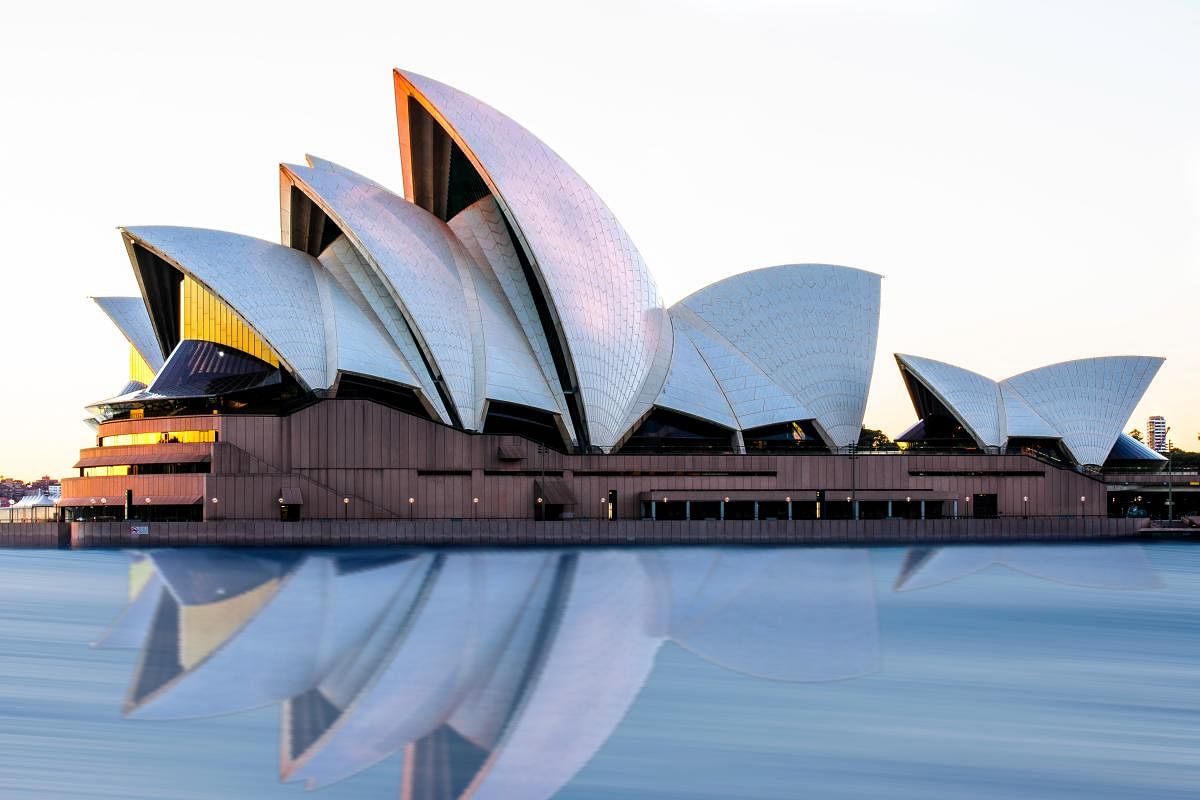
Located in Australia’s southeast coast, Sydney is adorned by its majestic harbour, beaches and the glorious Pacific Ocean. The Sydney Opera House, located in the city’s marina is not only a symbol for the metropolis but also a figure of pride for the entire nation of Australia. It is known all over the world for its unique use of a series of gleaming white sail-shaped shells as its roof structure. This distinctive and famous 20th-century performing arts facility is the best-known landmark Down Under.
The Sydney Opera House is situated on Bennelong Point (formerly known as Cattle Point), a cape on the south side of the harbour just east of the Sydney Harbour Bridge. Bennelong Point was named after Woollarawarre Bennelong, a senior Aboriginal Australian man at the time of the arrival of British colonisers in the country in 1788. Visually symbolic of a yacht’s sails, the building designed by Danish architect Jørn Utzon has a soaring, commanding presence that comprises a number of performance venues for dance, concerts, opera and theatre.
Engineering & construction
It all began when architect Jørn Utzon’s project was selected among 233 entries in a global competition held by the government of New South Wales (the state where Sydney is located) for the design of an opera house on the site of a tram depot overlooking the Sydney harbour. Construction started in 1957 with the collection of 588 concrete piles to build the land in and around Sydney harbour to support the massive new building. Work on the building began in 1959 with 10,000 construction workers employed.
However, as delays increased and costs began exceeding original budgets, the conservative government voted into office in 1965, held Utzon responsible. The new government declined to pay Utzon’s compensation, leaving the architect unable to pay his employees.
This resulted in the designer resigning and leaving Australia in 1966, and another architect, Peter Hall, was hired to design the Opera House’s interiors. Nevertheless, in the late nineties, the Sydney Opera House Trust selected Utzon as a design consultant for future construction improvements of the building. On the occasion of its inaugural, the Opera House was ten years behind schedule and fourteen times over budget. The initial cost estimation to construct the Sydney Opera House was $7 million. Whereas, the final cost of the building was $102 million, which was primarily financed by a State Lottery.
Concept, design & architecture
Queen Elizabeth II inaugurated the Sydney Opera House on 20th October 1973. The facility showcases avant-garde architectural work and structural design. The architectural style of the building can be described as Expressionist Modernism, which encompasses inventive form and use of innovative materials. The building of the concrete shells that form the roof was not easy. Utzon was able to come up with a ‘spherical solution’ where the shells were created from the surface of an imaginary sphere. This pioneer solution became an inspiration to architects worldwide and exhibited a seamless blend of design and engineering.
The Sydney Opera House includes three groups of interlocking vaulted shells, which cover its two main performance halls and a restaurant. These shell-structures are situated on a large platform, enclosed by terraces and are covered with more than one million tiles, made by Swedish company Höganas. In 2003, the same year the Opera House celebrated its 30th anniversary, Jørn Utzon was presented with the Pritzker Prize for Architecture, the highest award in its field.
Performance & events
Underneath the world’s best-known roof, guests will find six concert halls accommodating a total of 5,738 people, and outdoors, a large public square, a fancy eatery under a smaller set of sail-like roofs, and, one of the most captivating views. The Sydney Opera House is a versatile performing arts complex, which hosts over 3,000 events every year. The building’s main venue, the 2,679-seat Concert Hall, exhibits symphony concerts, choir recitals, and famous music shows.
Opera and dance presentations, including ballet, happen in the Opera Theatre, which seats just over 1,500 people. In addition, there are three theatres of varied dimensions and configurations for plays, film screenings, and smaller musical performances. The Forecourt, on the south-eastern side of the building, is used for outdoor performances. The facility also houses multiple eateries as well as a professional recording studio.
The Sydney Opera House was registered as a UNESCO World Heritage site in 2007, and the organisation describes it as “a great urban sculpture set in a remarkable waterscape, at the tip of a peninsula projecting into Sydney Harbour.” While guests are allowed to visit this iconic building and see it from the outside, the best way to see the interiors is to attend a performance or take a one-hour guided tour, which is offered in numerous languages.